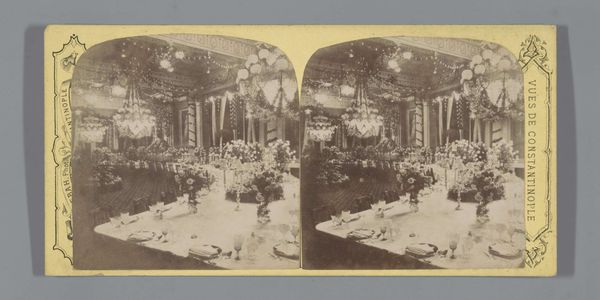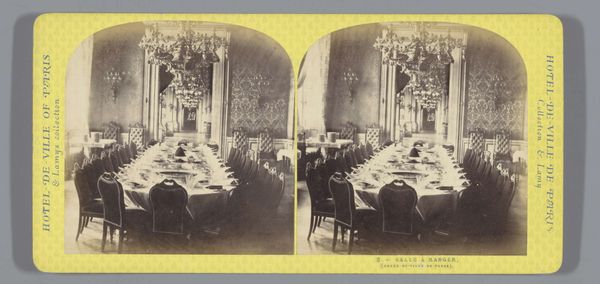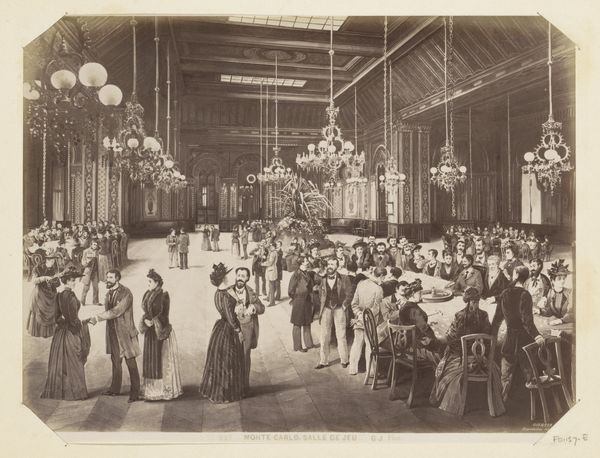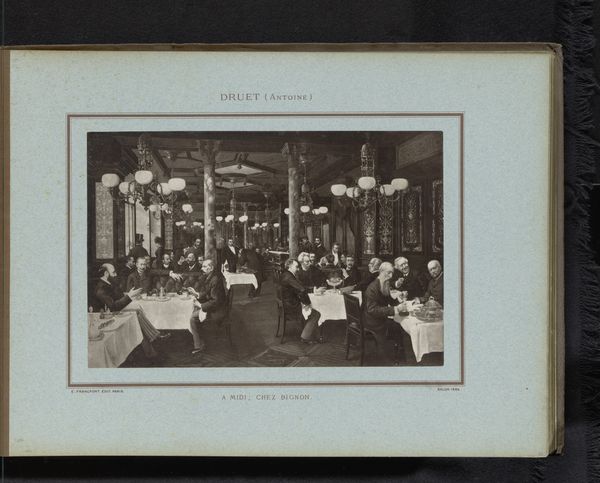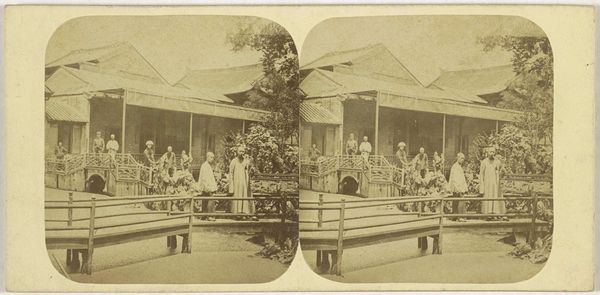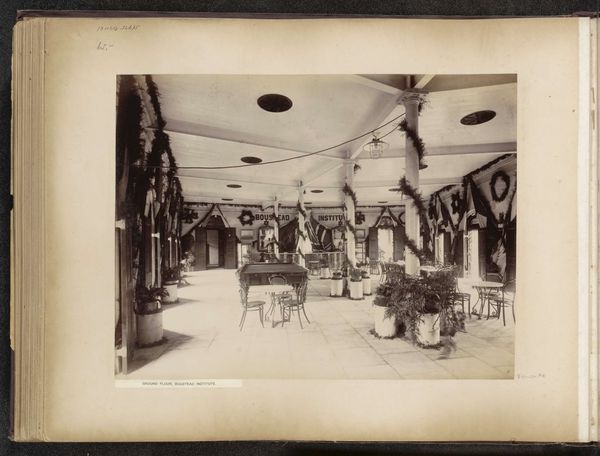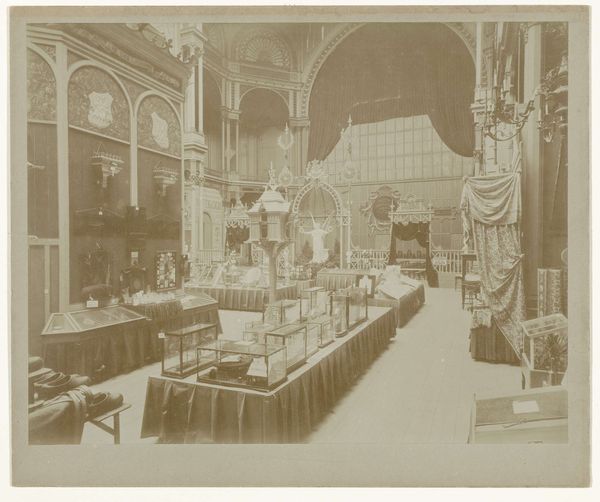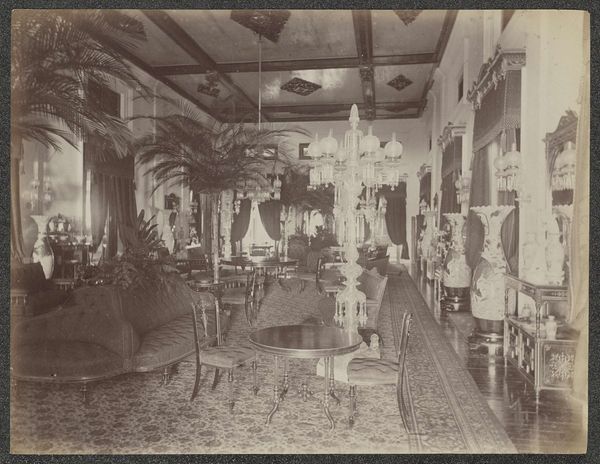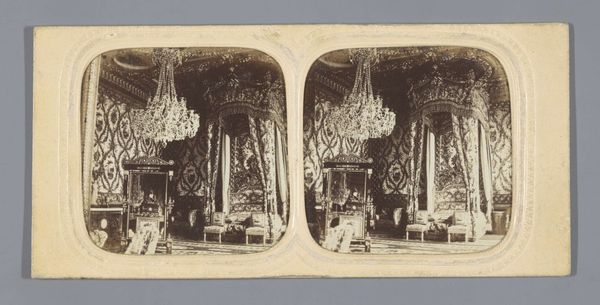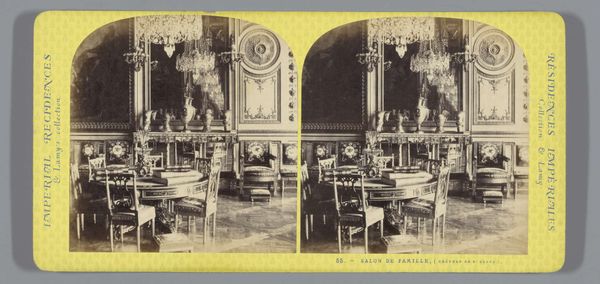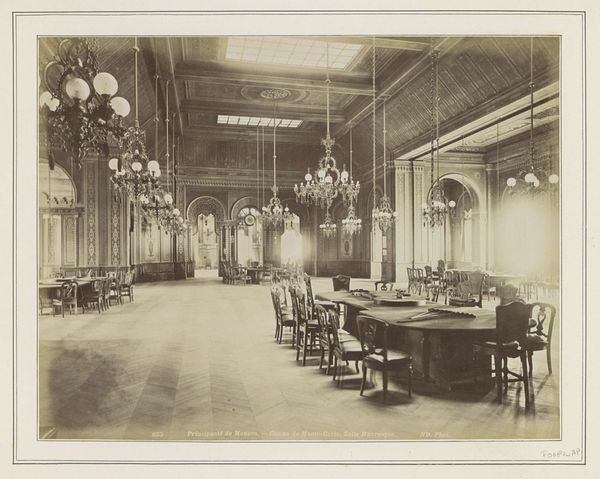
Interieur met een tentoonstelling in Den Haag, vermoedelijk ter ere van de rol van Koning Willem III na de watersnoodramp van 1861 1861 - 1867
0:00
0:00
mariahille
Rijksmuseum
photography, albumen-print
#
still-life-photography
#
photography
#
genre-painting
#
albumen-print
Dimensions: height 85 mm, width 174 mm
Copyright: Rijks Museum: Open Domain
Curator: This albumen print, taken between 1861 and 1867, captures an exhibition interior in The Hague, quite likely honoring King William III’s role after the devastating flood of 1861. It’s part of the Rijksmuseum's collection. What strikes you most? Editor: An opulent, yet muted affair. The sepia tones and meticulous staging lend an air of solemn commemoration. It looks almost funerary, despite all the ornamentation. Is it about celebrating life, or mourning loss? Curator: Perhaps both are intertwined. The flood was a major tragedy. But remember, images of political figures and rulers tend to involve this kind of theatrical staging. It projects power. And it reinforces their importance at difficult historical junctures. I find the albumen printing technique particularly interesting, creating depth of field and contrast—notice how sharp the details in the foreground are compared to the back. It’s really captivating. Editor: Captivating and carefully constructed. What interests me is thinking about how these spaces become theaters of power and identity. These meticulously arranged exhibitions—complete with busts and draped flags—weren’t merely displays. They were active constructions of narratives around national identity and political authority, subtly encoding messages of strength, resilience, and divine right, even within the context of a natural disaster. Look at those flags! Curator: It's true, the layers are complex. I can almost smell the varnish on those display cases, see the glint of light on polished objects... The scene practically breathes! Maybe what moves me is imagining what it felt like to be *there*. Editor: Precisely, the materiality is key. I’m considering how the specific aesthetic of that time—the sepia tones, the formal arrangements, and the very act of photographic preservation—helped shape collective memory around King William’s response and impact. Curator: Exactly. It serves as a looking glass through which we can interpret events of a painful period—but it shows how monarchy’s symbolism pervades to comfort those wounded moments. The flood was definitely a major wound! Editor: Right. Seeing it this way brings new meaning to our contemporary lens, understanding political response and historical reckoning with more sensitivity. Curator: Well said! Now, if we could only smell what it smelled like to actually be *there* back then…
Comments
No comments
Be the first to comment and join the conversation on the ultimate creative platform.
